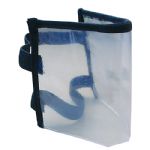Alert on the table
I’ve always believed that training a table dog is the hardest. You have to get the dog used to, and happy to stand on the floor and on the table.
The table can be a scary place for dogs at a show. The surface could be one of many things from carpet to rubber and any colour. The table could wobble and there is the height where each table at each show will put your dog at a different level to you each time.
Therefore, it’s important you get your table dog used to tables and different surfaces. To do this, make sure you make the table a positive experience such as giving loads of yummy treats just for being on the table, play a game when they get off the table and make sure they are used to being on different surfaces.
This will also help to get ears and tails up in breeds that require these features.






